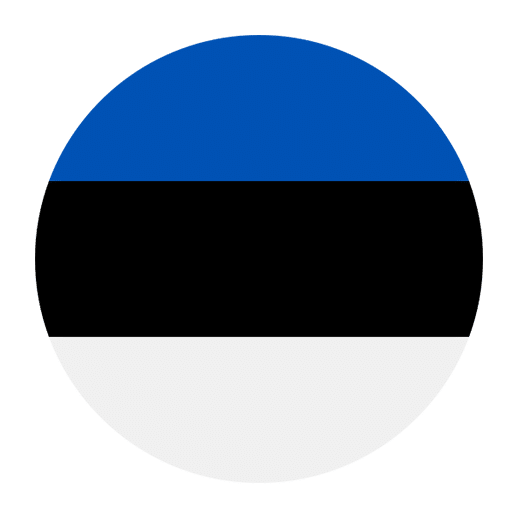Learning a new language can be a challenging yet rewarding endeavor. Estonian, a Finno-Ugric language spoken primarily in Estonia, is known for its unique sounds, intricate grammar, and extensive use of vowel harmony. For English speakers, diving into Estonian might seem daunting, but one effective and enjoyable way to immerse yourself in the language is through music. By listening to songs, you can improve your vocabulary, pronunciation, and understanding of cultural nuances. In this article, we’ll explore some must-listen Estonian songs that can aid in your language learning journey.
Why Learn Estonian Through Music?
Music is a universal language that transcends cultural barriers. It has the power to evoke emotions, tell stories, and bring people together. Here are some compelling reasons why learning Estonian through music can be highly effective:
1. Improved Pronunciation: Music provides a natural way to practice pronunciation and intonation. By singing along, you can mimic native speakers and get a feel for the rhythm and melody of the language.
2. Vocabulary Building: Songs often contain repetitive phrases and everyday vocabulary, making it easier to remember new words and expressions. Lyrics can introduce you to colloquial language and idiomatic expressions that might not be found in textbooks.
3. Cultural Insights: Music is a reflection of culture. By exploring Estonian songs, you’ll gain insights into the country’s history, traditions, and societal values. This cultural context can enrich your understanding of the language.
4. Motivation and Enjoyment: Learning through music is fun and engaging. It can break the monotony of traditional study methods and keep you motivated. Plus, you can listen to music anytime, anywhere—whether you’re commuting, exercising, or relaxing at home.
Must-Listen Estonian Songs
To help you get started, we’ve compiled a list of must-listen Estonian songs across various genres. These tracks not only showcase the beauty of the language but also offer diverse listening experiences.
Tõnis Mägi – “Koit”
Tõnis Mägi is a legendary figure in Estonian music, and his song “Koit” (Dawn) is an iconic piece that played a significant role during the Singing Revolution—a series of events that led to Estonia’s independence from the Soviet Union. The song’s powerful lyrics and emotional delivery make it a great starting point for language learners. Pay attention to Mägi’s clear enunciation and the song’s poetic language.
Curly Strings – “Kauges Külas”
Curly Strings is a modern folk band known for their catchy melodies and harmonious vocals. “Kauges Külas” (In a Distant Village) is a delightful tune that combines traditional folk elements with contemporary sounds. The song’s lyrics are relatively simple, making it easier for beginners to follow along. Plus, the repetitive chorus provides a great opportunity to practice pronunciation.
Lenna – “Mina Jään”
Lenna Kuurmaa, a well-known Estonian singer, delivers a heartfelt performance in “Mina Jään” (I Will Stay). This ballad features clear and slow-paced lyrics, making it ideal for learners to grasp the words and phrases. The emotional depth of the song also offers a glimpse into Estonian sentimentality and expression.
Smilers – “Mojito”
For those who enjoy upbeat and energetic music, Smilers’ “Mojito” is a must-listen. This pop-rock band infuses their songs with catchy hooks and relatable themes. “Mojito” is a fun, summery track with straightforward lyrics that are easy to sing along to. It’s perfect for practicing conversational vocabulary and slang.
Vaiko Eplik – “Nõgesed”
Vaiko Eplik is a versatile artist known for his innovative approach to music. “Nõgesed” (Nettles) is a song that blends pop and rock elements with introspective lyrics. Eplik’s enunciation is clear, and the song’s structure allows listeners to focus on both individual words and the overall meaning. It’s an excellent choice for intermediate learners looking to expand their vocabulary.
Trad.Attack! – “Jaan’kene”
Trad.Attack! is a band that reinterprets traditional Estonian folk songs with a modern twist. “Jaan’kene” is a vibrant track that combines traditional instruments with contemporary beats. The song’s repetitive nature and folk roots make it a valuable resource for learning traditional vocabulary and cultural references.
Anne Veski – “Veelüks öö”
Anne Veski is a beloved Estonian pop singer, and “Veelüks öö” (One More Night) is one of her classic hits. The song’s straightforward lyrics and Veski’s clear pronunciation make it accessible for learners. It’s a great example of Estonian pop music from the 1980s and provides a nostalgic look at the era’s musical style.
Tips for Learning Estonian Through Music
Listening to music is just the beginning. To maximize your learning experience, consider these tips:
1. Follow Along with Lyrics: Find the lyrics to the songs you’re listening to and follow along as you listen. Websites like Lyricstranslate.com often have translations and transliterations that can help you understand the meaning of the words.
2. Sing Along: Don’t be shy—sing along with the songs! This will help you practice pronunciation, intonation, and rhythm. Even if you don’t get it perfectly, the practice will build your confidence.
3. Break Down the Lyrics: Take the time to break down the lyrics line by line. Look up unfamiliar words and phrases, and try to understand the context in which they are used. This will deepen your comprehension and expand your vocabulary.
4. Create Playlists: Create playlists of your favorite Estonian songs and listen to them regularly. Repetition is key to language learning, and having a playlist will ensure you get consistent exposure to the language.
5. Use Music Apps: Music streaming apps like Spotify often have lyrics integrated into the platform. Use these features to read along as you listen. Some apps also allow you to slow down the tempo, making it easier to catch every word.
6. Connect with the Culture: Learn about the artists and the cultural context of the songs. Understanding the background of the music will give you a deeper appreciation and help you connect with the language on a cultural level.
7. Practice with Native Speakers: If possible, practice singing or discussing the songs with native Estonian speakers. They can provide valuable feedback on your pronunciation and help you understand subtle nuances in the lyrics.
Conclusion
Learning Estonian through music is not only an effective method but also an enjoyable one. By immersing yourself in the melodies and lyrics of Estonian songs, you can improve your pronunciation, expand your vocabulary, and gain a deeper understanding of the culture. The songs listed in this article are just a starting point—there’s a rich and diverse world of Estonian music waiting to be explored. So put on your headphones, hit play, and let the music guide you on your language learning journey.

